Thiocarbanilide

Thiocarbanilide structure
|
Common Name | Thiocarbanilide | ||
|---|---|---|---|---|
| CAS Number | 102-08-9 | Molecular Weight | 228.313 | |
| Density | 1.3±0.1 g/cm3 | Boiling Point | 348.7±25.0 °C at 760 mmHg | |
| Molecular Formula | C13H12N2S | Melting Point | 152-155 °C(lit.) | |
| MSDS | USA | Flash Point | 164.7±23.2 °C | |
| Symbol |

GHS06 |
Signal Word | Danger | |
| Name | 1,3-Diphenyl-2-thiourea |
|---|---|
| Synonym | More Synonyms |
| Density | 1.3±0.1 g/cm3 |
|---|---|
| Boiling Point | 348.7±25.0 °C at 760 mmHg |
| Melting Point | 152-155 °C(lit.) |
| Molecular Formula | C13H12N2S |
| Molecular Weight | 228.313 |
| Flash Point | 164.7±23.2 °C |
| Exact Mass | 228.072113 |
| PSA | 56.15000 |
| LogP | 2.34 |
| Vapour Pressure | 0.0±0.8 mmHg at 25°C |
| Index of Refraction | 1.749 |
| Stability | Stable. Combustible. Incompatible with strong oxidizing agents. |
| Water Solubility | <0.01 g/100 mL at 19 ºC |
| Symbol |

GHS06 |
|---|---|
| Signal Word | Danger |
| Hazard Statements | H300 |
| Precautionary Statements | P301 + P310 + P330 |
| Personal Protective Equipment | Eyeshields;Faceshields;Gloves;type P2 (EN 143) respirator cartridges |
| Hazard Codes | T:Toxic; |
| Risk Phrases | R25 |
| Safety Phrases | S36/37/39-S45-S24/25 |
| RIDADR | UN 2811 6.1/PG 2 |
| WGK Germany | 3 |
| RTECS | FE1225000 |
| Packaging Group | II |
| Hazard Class | 6.1 |
| HS Code | 2930909090 |
| Precursor 8 | |
|---|---|
| DownStream 10 | |
| HS Code | 2930909090 |
|---|---|
| Summary | 2930909090. other organo-sulphur compounds. VAT:17.0%. Tax rebate rate:13.0%. . MFN tariff:6.5%. General tariff:30.0% |
|
Occupational rubber glove allergy: results of the Information Network of Departments of Dermatology (IVDK), 1995-2001.
Contact Dermatitis 48(1) , 39-44, (2003) About 21% of the patients with occupational contact dermatitis registered in the Information Network of Departments of Dermatology (IVDK) in the years 1995-2001 were patch tested due to suspected rubb... |
|
|
Study of a reaction between 2,3-dichloro-1,4-naphthoquinone and N,N'-diphenyl thiourea involving an EDA adduct as intermediate.
Spectrochim. Acta. A. Mol. Biomol. Spectrosc. 60(7) , 1641-7, (2004) The reaction between 2,3-dichloro-1,4-naphthoquinone and N,N'-diphenyl thiourea in acetonitrile medium, which yields the product, 2,3-(N,N'-diphenylthioureylene)-naphtho-1,4-quinone has been found to ... |
|
|
Diphenylthiourea, a common rubber chemical, is bioactivated to potent skin sensitizers.
Chem. Res. Toxicol. 24(1) , 35-44, (2011) Diphenylthiourea (DPTU) is a known skin sensitizer commonly used as a vulcanization accelerator in the production of synthetic rubber, for example, neoprene. The versatile usage of neoprene is due to ... |
| N,N′-diphenylthiourea |
| Thiocarbanilide |
| MFCD00004921 |
| N,N'-Diphenylthiourea |
| Diphenylthiourea |
| EINECS 203-004-2 |
| 1,3-Diphenylthiourea |
| Thiourea, N,N'-diphenyl- |
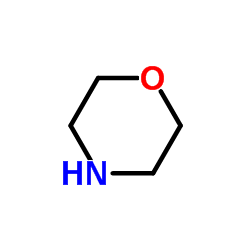 CAS#:110-91-8
CAS#:110-91-8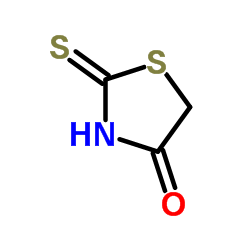 CAS#:141-84-4
CAS#:141-84-4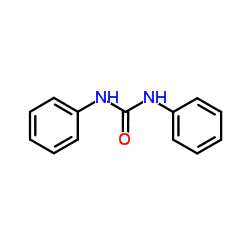 CAS#:102-07-8
CAS#:102-07-8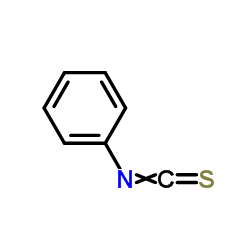 CAS#:103-72-0
CAS#:103-72-0 CAS#:75-15-0
CAS#:75-15-0 CAS#:100-65-2
CAS#:100-65-2 CAS#:534-18-9
CAS#:534-18-9 CAS#:6160-65-2
CAS#:6160-65-2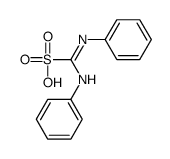 CAS#:107678-85-3
CAS#:107678-85-3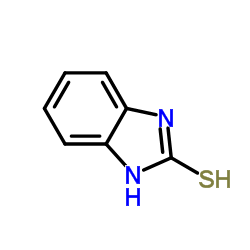 CAS#:583-39-1
CAS#:583-39-1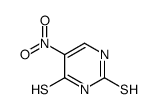 CAS#:14623-57-5
CAS#:14623-57-5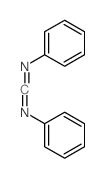 CAS#:622-16-2
CAS#:622-16-2 CAS#:1768-59-8
CAS#:1768-59-8 CAS#:92-36-4
CAS#:92-36-4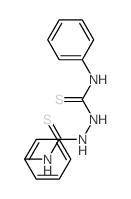 CAS#:2209-59-8
CAS#:2209-59-8 CAS#:2150-31-4
CAS#:2150-31-4 CAS#:520-03-6
CAS#:520-03-6 CAS#:463-58-1
CAS#:463-58-1
